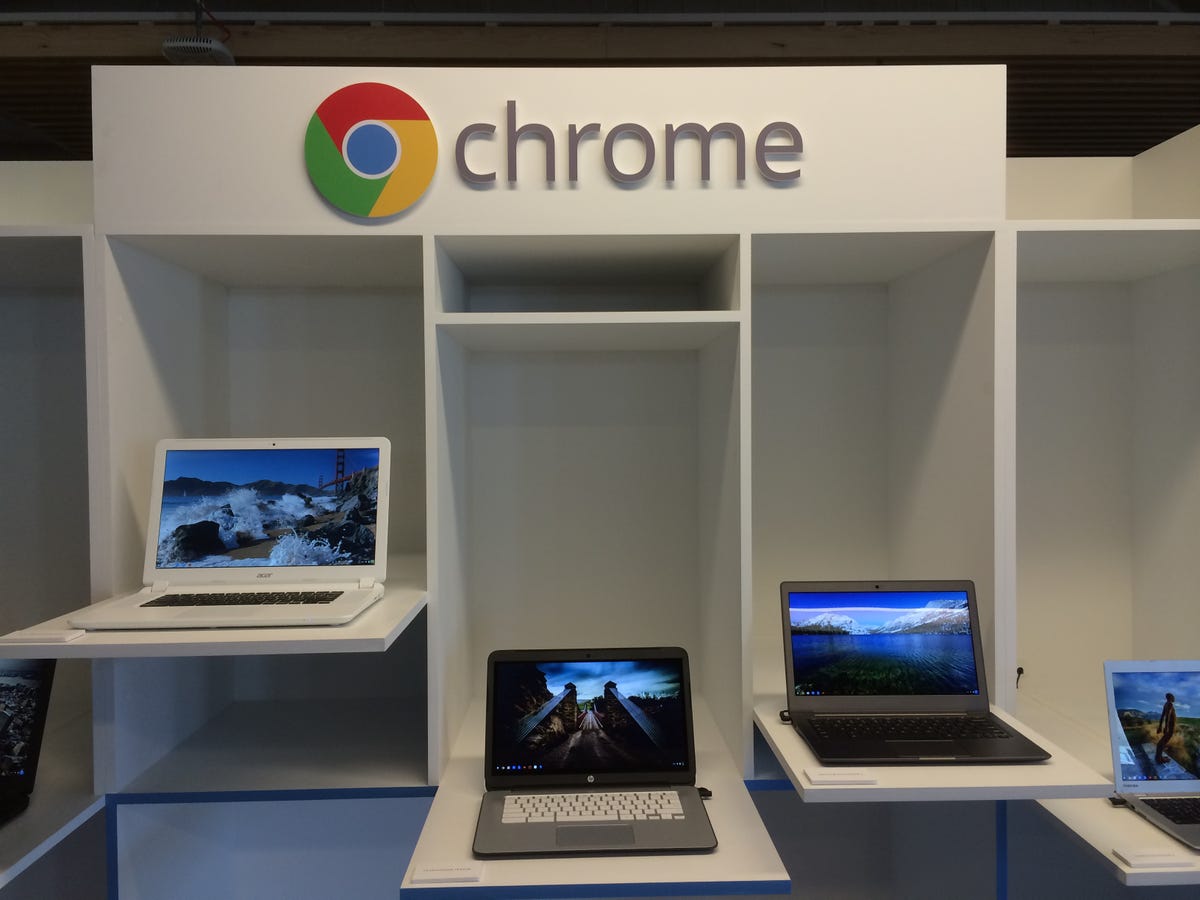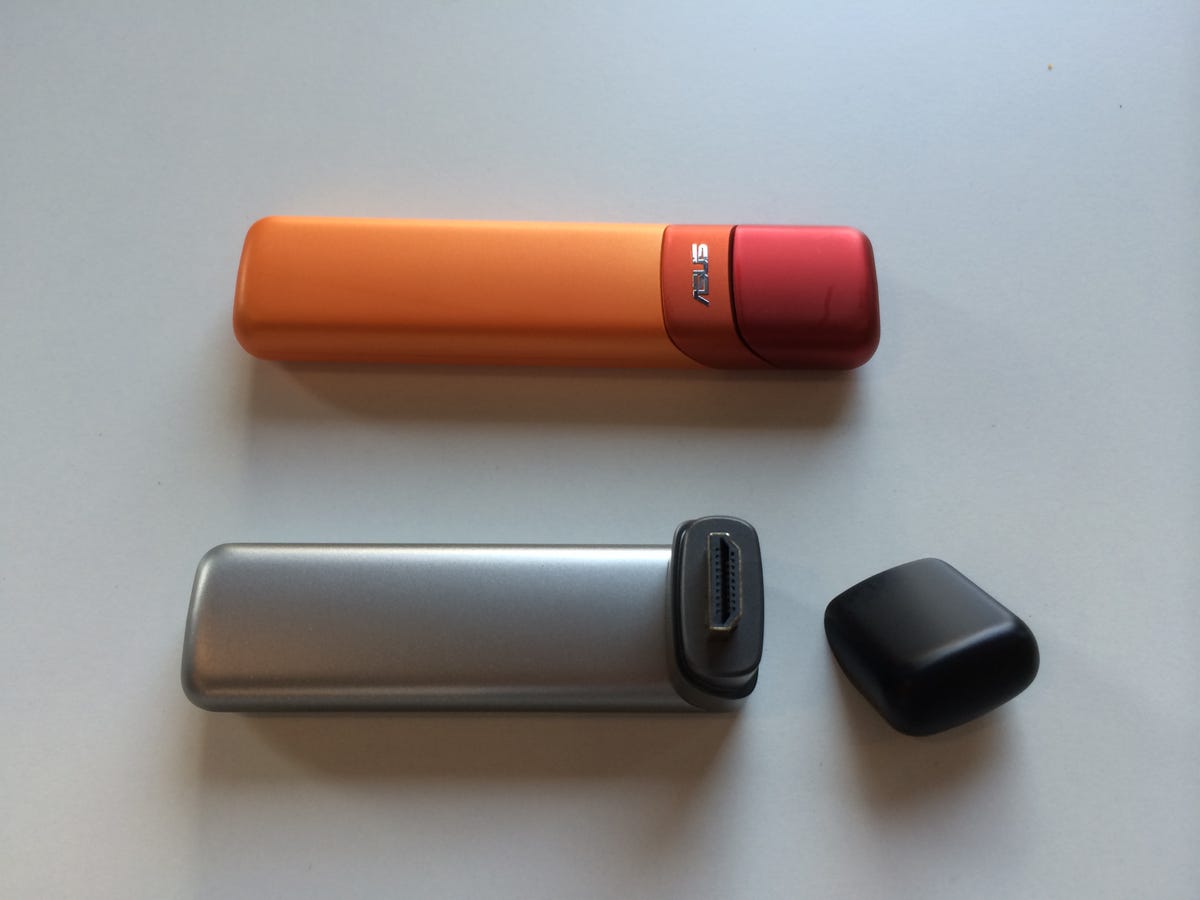
Richard Nieva/CNET
Move over, Android.
Google’s mobile operating system may be the most popular software in the world for powering phones and tablets. But Google is also making a push for its other operating system, Chrome OS, which mostly powers laptop and desktop computers.
Consider a few of the new devices the search giant announced Tuesday. The Asus Chromebit is a small device that looks like an oversize flash drive that turns any screen or monitor with an HDMI video port into a full-blown computer. With the Chromebit, you can connect to a Wi-Fi network and run Google’s Chrome browser, check Gmail and watch YouTube — all through Google’s Chrome operating system.
The device will sell for less than $100, Google said. It’s set to be released this summer.
Then there’s the Asus Chromebook Flip, an all-metal device that’s a cross between a laptop computer and a tablet, which will sell for $249. Google also announced two new laptops from manufacturers Hisense and Haier. The companies’ $149 Chromebooks, designed for the education market, are available for pre-order today on Google’s online store. The Haier laptop is available on Amazon, while the Hisense one is available at Walmart.


Richard Nieva/CNET
Those products are all part of Google’s effort to get its Chrome OS — and by extension, its suite of software products like Gmail and Google Docs — into the hands of as many people as it can. That includes trying to reach students in classrooms, as well as people from emerging markets like India and Thailand. The company said it will release around 10 new Chromebooks in the next few months.
“Our goal is not just to sell some of these products, but to make computing accessible to more people,” said Caesar Sengupta, a vice president of product management at Google.
Google first introduced the Chromebook laptop in 2011, but its market share remains small. Of all laptops sold worldwide in 2014, only 3.5 percent were running Google’s Chrome OS, according to research firm IDC. PCs running Microsoft’s Windows software, the market leader, accounted for 86 percent of laptops sold, while Apple’s MacBook notebooks had an 8.7 percent share.
But Chrome OS devices have gotten much better traction in the education market in the United States. In 2014, Chromebooks accounted for about one third of the education market with a 29.9 percent share. Windows still had the majority with 39 percent, while Apple had 32 percent, according to IDC.


Richard Nieva/CNET
Chrome, minus the Chromebook
Google has good reason to tout Chrome OS. The software is the entry point to people using more Google apps and services. The more information the company can glean from users, the more potential revenue it can make from showing them targeted ads, which marketers deem the most valuable.
To that end, one of Google’s newest additions to the lineup of devices, the Chomebit, hawks Chrome OS without even trying to sell a Chromebook laptop.
The company said the device holds appeal to for someone in an Internet cafe in, say, Indonesia, who wants a fast Internet experience but is stuck using old computer equipment. The Chromebit could also be used to replace the aging computer in your living room — all you need is the monitor, Internet connection, keyboard and mouse you already have. Or, schools could use the Chromebit to revamp an old computer lab.
“You can instantly update it to a modern computing experience,” said Sengupta.
The device has a USB port at one end and can connect to other accessories via the Bluetooth standard for connecting wireless devices. The Chromebit also works similarly to Google’s $35 Chromecast, which is used for streaming videos from the Internet to a TV and also connects to the screen from an HDMI port.
The company also showed off other non-laptop devices that are powered by Chrome OS. Google has touchscreen kiosks that retailers can use on their store floors. The company said it has deals with the clothing store Chico’s and some other retailers to use screens running Chrome OS to power digital signs.
Hooking users in
Google has been hard at work trying to get emerging markets connected to the Internet. Last September, it announced Android One, an initiative aimed at getting high-quality, low-cost Android phones to developing populations. The project has already launched in countries including India and the Philippines.
The company has also experimented with satellites and balloons to beam Internet connectivity to rural places, instead of building cell towers on the ground.
Hisense’s $149 Chromebook goes with you (pictures)






+11 more
Bringing more people online is a problem Google will have to solve if it wants the Chrome OS to have a future. The software relies heavily on the cloud, storing most of the files that would ordinarily end up on computer hard drives onto remote servers owned by the company that can be accessed anytime through the Internet.
But that becomes difficult when access to the Web is sparse.
“Without strong Internet connectivity, a Chromebook is just a brick,” said Rajani Singh, an analyst with IDC, who specializes in Chromebooks. She notes that the devices’ offline mode has gotten better, but that Google is still working to improve the feature.


Now playing:
Watch this:
Hisense’s Chromebook is portable, light and only $149
1:48




